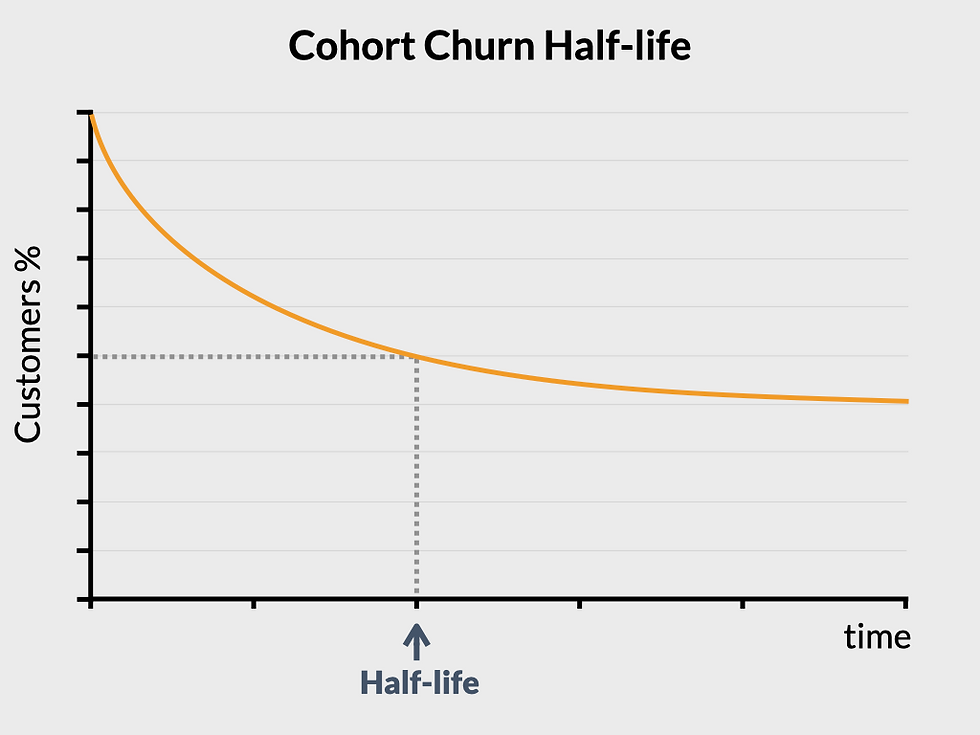The Powerful Alternative to Churn Rate (4/4)
- Greg Daines

- Sep 12, 2022
- 2 min read
In this final post on customer churn rates, I reveal the simple yet powerful way to measure and understand customer churn...
THE BACK STORY
Years ago I was struggling with the problems of customer churn rates when I realized scientists had addressed this in an eerily similar situation.
I remembered from school chemistry that the decay of a radioactive isotope has a downward swooping curve just like my cohort churn curves.

I also recalled that the metric scientists developed to compare isotopes was "half-life": the amount of time it takes to lose half the isotope.
I was frustrated enough at that point to try anything, so I decided to see if this method could work for customer churn.
It is not an exaggeration to say that the result of this little experiment has literally transformed everything I've done with customer churn ever since.
Customer half-life is the ultimate
customer churn and retention metric.
Here's why...
SIMPLE
Customer half-life is simply the amount of time it takes to lose half (50%) of the customers in a cohort.

This makes it vastly easier to explain than churn rates to others, a rare dose of clarity in a world of confusion.
UNDISTORTED
Customer half-life is an accurate measure of churn undistorted by whatever is happening in sales. That's why I refer to the customer half-life as "Real Churn".
NONLINEAR
Like radioactive decay, customers don't churn at a steady rate. Customer half-life is a clear way to measure the nonlinear reality of customer churn.
COMPARABLE
Customer half-life is comparable between cohorts not only because it removes distortions, but also because it works with cohorts that are not the same size.
This may be the most important benefit of half-life because it's impossible to systematically improve churn if we can't measure the impact of our interventions.

The legendary Peter Drucker is famous for this simple insight:
“If you can’t measure it you can’t improve it.”
BENCHMARK-ABLE
For the same reason that you can use half-life to compare cohorts within a company, you can also compare customer half-life between companies.
Customer half-life finally allows us a way to accurately measure the retention impact of virtually any factor across different companies and industries.
HOW TO CALCULATE YOUR CUSTOMER HALF-LIFE
Customer half-life is a simple output of conducting customer cohort analysis. ☞ My instructions and downloadable template for cohort analysis are available here: https://www.churnrx.com/churn-guide
THE RETENTION ANALYTICS REVOLUTION
These new methods based on nonlinear cohort decay analysis have set the stage for a new generation of "Retention Analytics", empowering companies with the metrics and insights to finally get control over their customer retention.



This is a terrific post and very thought provoking! Thanks for writing.